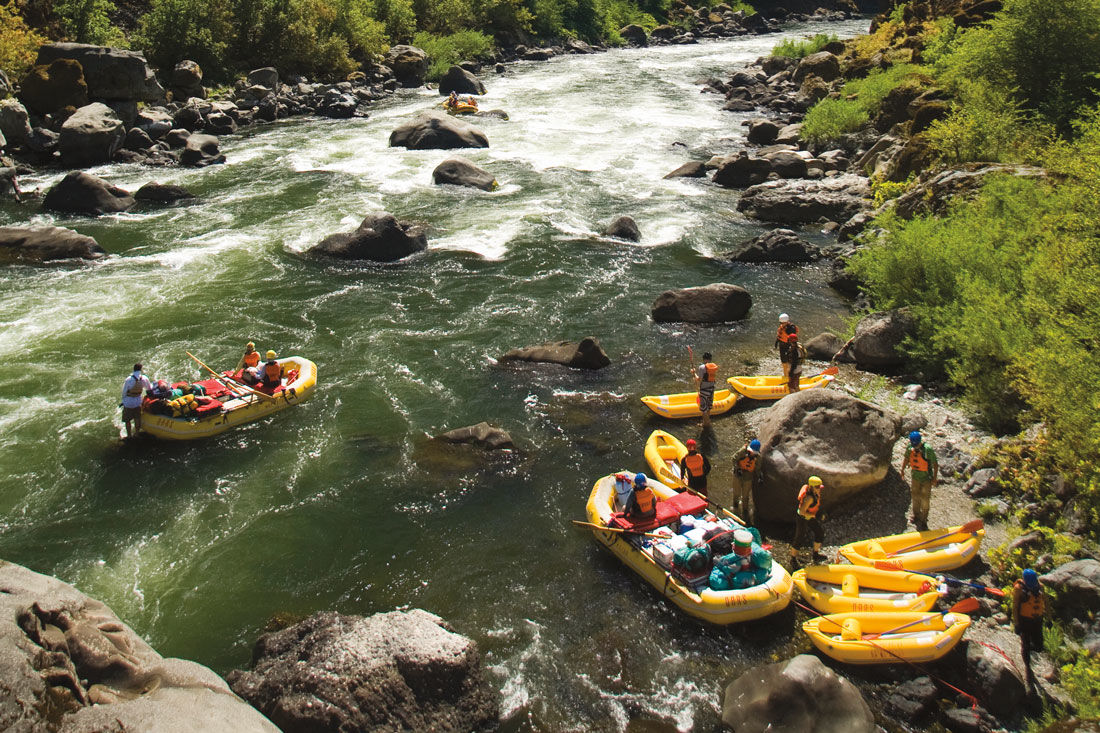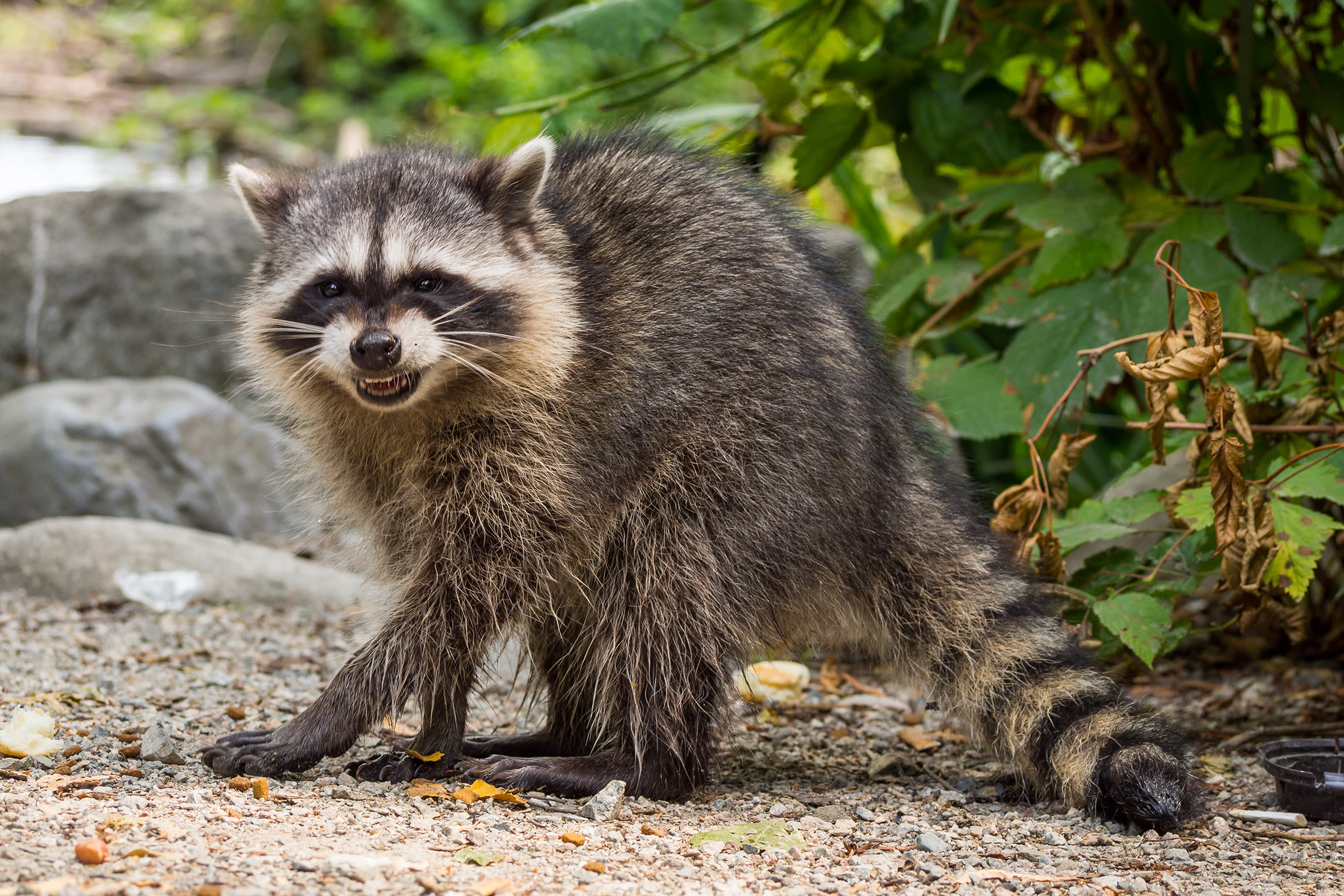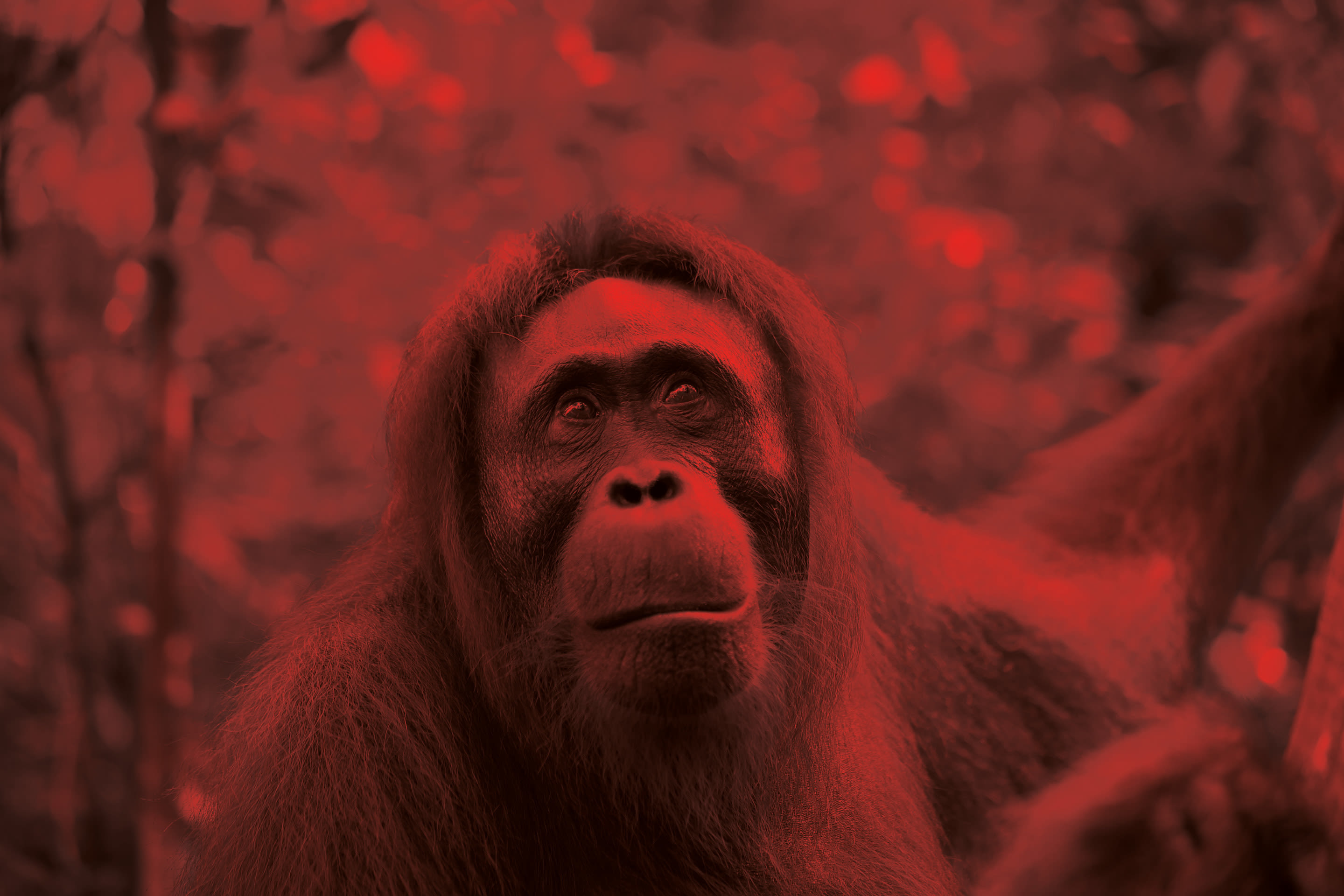
How One Portland Special Agent Went Undercover to Stop Poaching and Smuggling
The parcel didn’t look suspicious. Roughly the size of a shoebox, it arrived in San Francisco one spring day in 2013, origin Indonesia, packaged in brown paper, hand-addressed, marked “crafts.”
But at the airport’s overseas mail facility, a routine inspection by the US Fish and Wildlife Service revealed instead an eight-inch wedge of bird beak. Lab tests showed that the mandible, rust-red near the base, festooned with multicolor beads, was from a helmeted hornbill—a massive Borneo rain-forest bird known in certain circles as “flying ivory,” coveted by collectors for the carvable crimson lump of keratin bound to its skullcap. The hornbill’s head fetches five times the price of elephant ivory per gram, fueling wholesale slaughter by poachers in Sumatra and Borneo. On watch lists for decades, the bird is now considered “critically endangered”—meaning the species could die out within three generations.
The addressee of the Indonesian package: a curio shop in Forest Grove, Oregon.
US Fish and Wildlife—the nerdy agency of fish counts and duck hunting—also employs “special agents.” Think Law and Order: Endangered Species Unit. The agency's detectives spend a lot of time explaining the Migratory Bird Act and searching luggage for, say,
illicit clam meat. In Oregon, such tasks fall to a handful of agents and inspectors; and when the small team here musters a full-scale covert operation, the targets likely have a potential rap sheet that would shock even the PETA-agnostic.
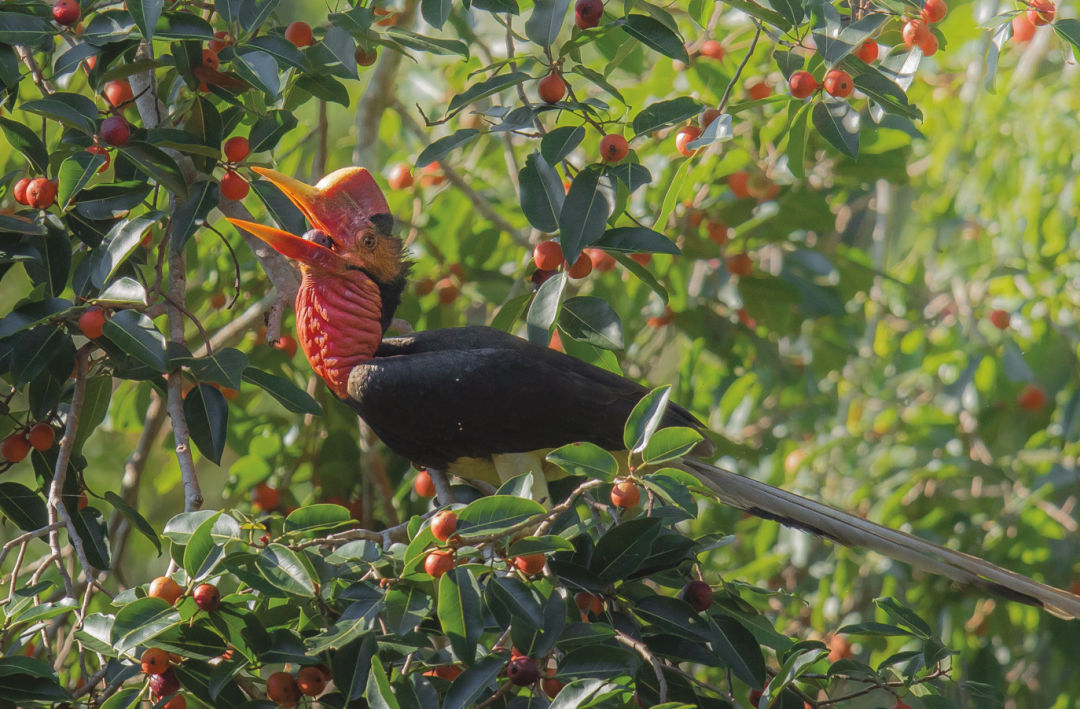
500: approximate number of helmeted hornbills killed per month in Indonesia in 2013
The Forest Grove shop owner, as profiled by a Portland Tribune article earlier in 2013, was a retirement-age man proud of his inventory: shrunken heads, singing bowls, a shaman’s turtle-shell backpack from Borneo—rare products “rich in history” and “chilling to touch.” (The owner has since been named by media reports as Gary Roy Holstrom; Fish and Wildlife cannot confirm his identity for legal reasons.) His collection, he claimed, was sourced from qualified procurers who scoured estate sales and “artisan villages.”
But just two years before the hornbill mandible was intercepted, inspectors had seized another package addressed to his shop near Pacific University: a monkey skull sent from an Indonesian outfit called Borneo Artifact. At that time the shop owner, responding to a Fish and Wildlife letter informing him of the skull’s endangered status, denied ever having ordered such an item. Now, the discovery of a second package from the same source suggested that the shop owner was lying.
Paul Montuori, a Portland-based Fish and Wildlife special agent, was tabbed to head the investigation. “We had proof that they had been contacted by the agency before,” says Montuori. “It was well-documented in writing: what they had done, why it was illegal. And then you had a second time. I pulled up the individual’s website and they were selling endangered wildlife. I contacted that person. That’s when the covert part starts.”
It’s a role Montuori’s used to playing. A law-schooled veteran of the State Department and passport fraud cases, he joined Fish and Wildlife eight years ago specifically for such field work, which has seen him consorting with Japanese turtle smugglers and British reptile traders—ideally, aiming to put them out of business. As a covert agent, his appearance and history—with the exception of his legal involvement in cases—is largely scrubbed from the Internet. You won’t find his photo.
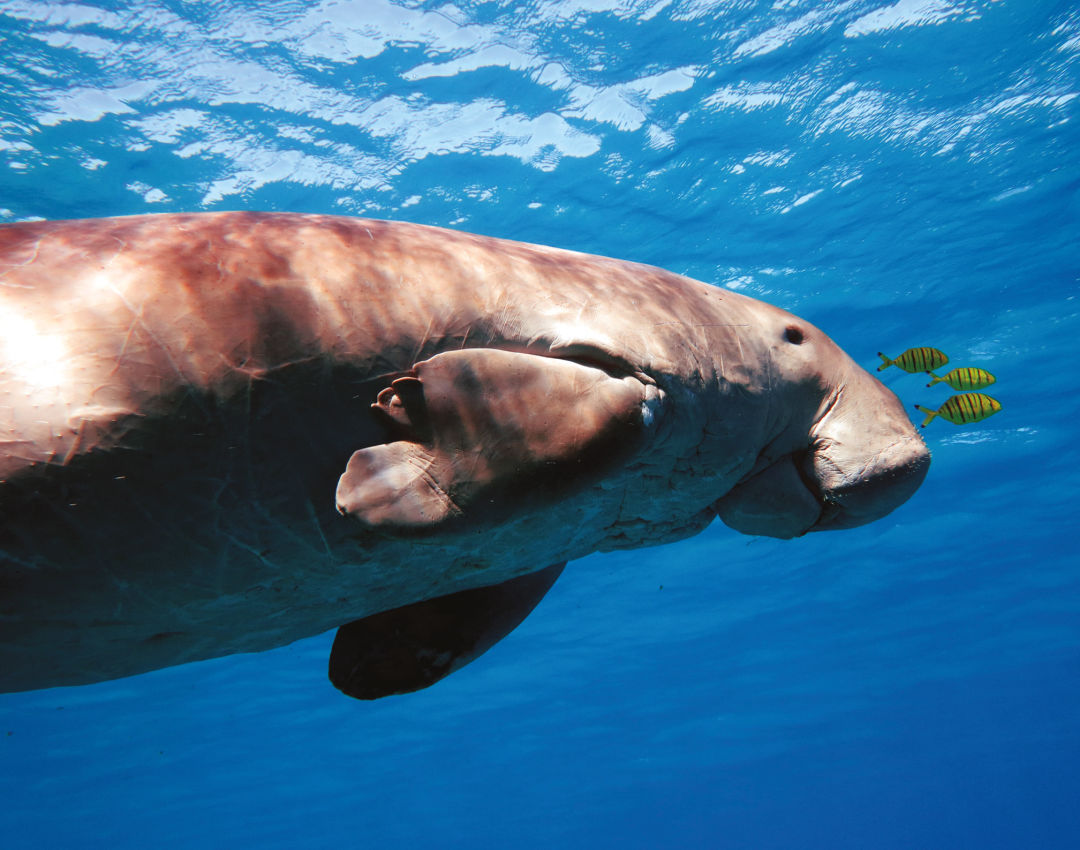
1982: the year the dugong, cousin of the manatee, was first listed as a vulnerable species
The Forest Grove collector, despite the federal confiscations, was still open for business. In March 2014, Montuori made first contact with him by e-mail, assuming the air of an eager connoisseur. On July 1, the investigator sent a colleague, Special Agent Jimmy Barna, to make purchases in person. Barna walked away with several artifacts, including a protected turtle shell and two orangutan skulls—items, the shop owner had confirmed to this interested customer, sourced from his suppliers in Borneo.
“The case gets better if you know someone is criminally trying to deceive the government,” says Montuori. “We need to prove that they knowingly did something for the US Attorney’s Office to accept the case.”
Within days, Fish and Wildlife had a search warrant for the shop owner’s house, which doubled as his primary place of business. Six agents (plus a computer forensic specialist and two wildlife inspectors) swarmed the lamplit, brick-walled space. The man—surrounded by bear claws, yak bones for use in tantric rituals, and skulls from langur to loris—quickly confessed.
Agents outlined the potential charges: for violating the Endangered Species Act, he faced fines up to $50,000, maybe a year in prison. Failure to procure customs permits designed to comply with international animal-smuggling treaties could mean more charges. The raid also happened to coincide with a presidential mandate. Earlier that month, Barack Obama had created a cabinet-level task force against wildlife smuggling, engaging leaders from Treasury to Homeland Security to combat “an international crisis that continues to escalate.”
The owner agreed to cooperate. To expand the case, Montuori combed through the shop owner’s e-mail archive, analyzed PayPal transactions dating back to 2008, and parsed the networks of smugglers that supplied the shop. Increasingly, he came back to Borneo Artifact—an outfit that for years had shipped illicit shells and skulls to Forest Grove.
Nearly one year after the initial raid, Montuori assumed the curio seller’s e-mail identity. On June 23, 2015, the USFW agent contacted Borneo Artifact, looking for something special to buy.
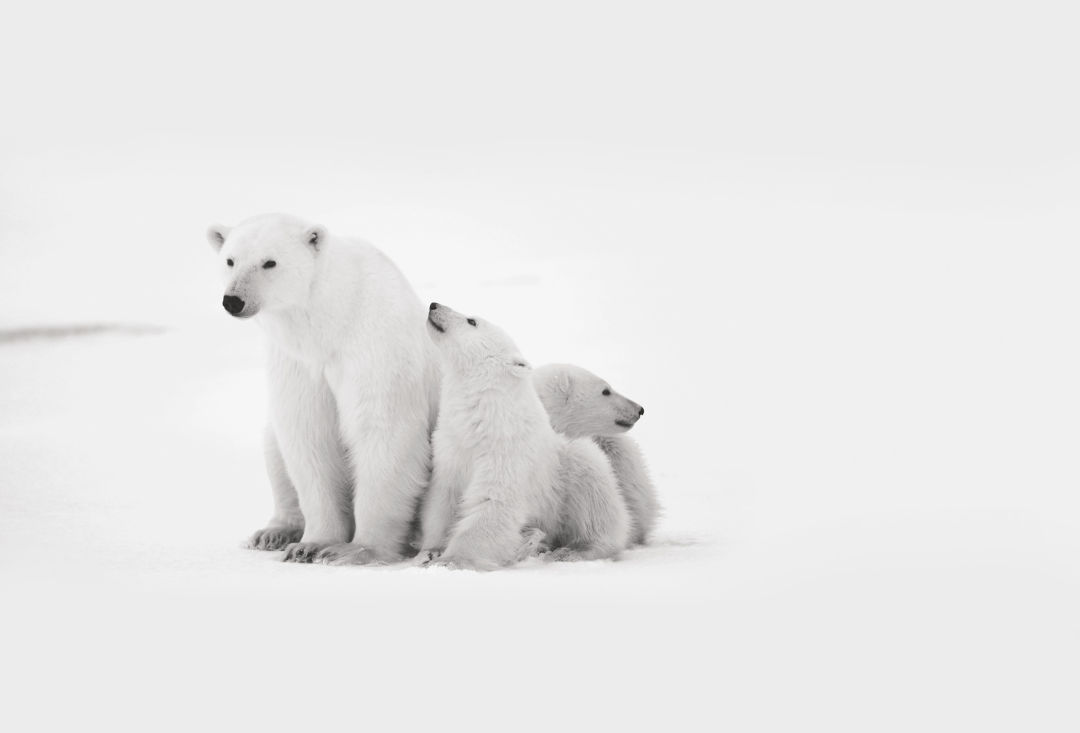
$50,000: fee for a polar bear hunt in 2008—the year the U.S. first listed the species as threatened
Ducks lured to a baited cornfield for out-of-season hunting. A whale bone necklace purchased on vacation. A polar bear pelt that really ties the room together. The biological treasures at the core of wildlife trafficking—a global trade that moves, according to one World Wildlife Fund estimate, $10 billion in “products” a year—can seem innocuous to the casual consumer. In fact, in the shadow world where live sea turtles are transported in Saran-wrapped snack boxes, the criminals Montuori encounters often consider themselves akin to stamp collectors.
“The majority see themselves as hobbyists,” he says. “They don’t think they are negatively impacting ecosystems or wildlife. And yet they create an unsustainable demand.”
For others, coveting a rare collectible can feel like an activist’s love. How many Americans even know of the threats faced by the slinky, gunmetal-sheened Eastern indigo snake? Couldn't a private owner of one specimen—or a Mariana fruit bat, or a California tiger salamander—consider themselves a protector of the species?
But with Operation Pongo, as the Borneo Artifact investigation was dubbed, Montuori and his colleagues found themselves dealing with a different kind of animal: the profit-driven predator. The Malaysian operators, Eoin Ling Churn Yeng and Galvin Yeo Siang Ann, had established a pattern of deception in the US and perhaps beyond. From various cities in Indonesia, they divided animal parts into different shipments to hamper identification. Their packages all sported the same benign descriptions: “crafts” and “crafts for decoration.” Back in 2011, when Fish and Wildlife had seized the primate skull from Montuori’s now-confidential informant, they encouraged denial. (“Very important,” Ling advised his Forest Grove customer in an e-mail, “never admit you have an interest in this thing and buy it, because it is an offence for buying this item! Easiest way is to say you have no idea who sent that to you.”)
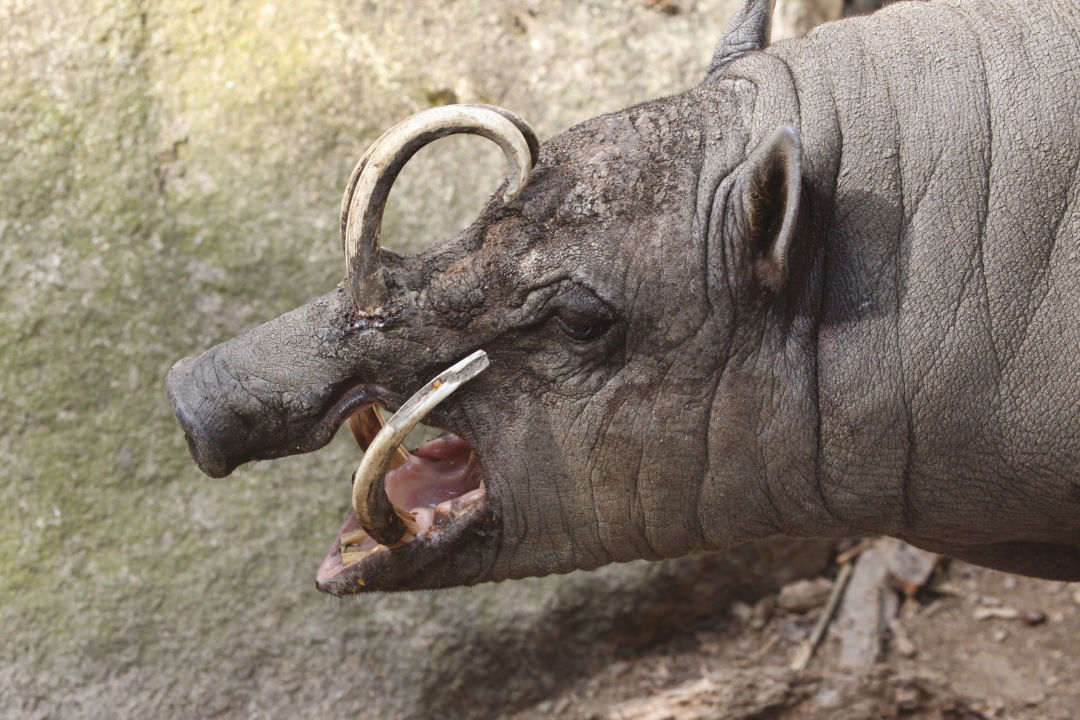
10,000: estimated remaining wild population of the Sulawesi babirusa
Borneo Artifact’s online storefront most prominently advertised human handicraft: pottery, textiles, antique Chinese art. But a deeper delve yielded whale bone statues (described euphemistically as “organic bone of the sea”) and skulls of protected wild boar. Montuori needed to know what kind of operation he was dealing with. Were Ling and Yeo just middlemen, fencing products opportunistically? Or were they ringleaders, directing poachers in Borneo?
“You had two individuals living in a country where orangutans reside—one of only two places in the world,” says Montuori. “It’s an environmental smorgasbord. For me, concern went through the roof when I realized that.”
The agent pored through his informant’s archival correspondence, studying the Forest Grove man’s distinctively awkward phrasing and the relationship’s elliptical banter. (Discussing the first skull seizure, the Oregon man wrote: “my first question is: ‘Have you had this happen before with one of your US clients?’ ‘And, what did you do to help?’” Yeo replied: “u can say that it could be some friends.”) After analyzing thousands of e-mails, Montuori felt ready, and “reinitiated” contact with friendly questions about items in Borneo Artifact’s online shop.
Why the curious description of the statues? Ling’s swashbuckling reply: “I’ll be in hot soup (or worse gunned down by FBI) and removed by ebay if stated they are whale bones.”
How did they start? In 2005, with the sale, to an American, of a monkey skull necklace.
Soon Ling broached the first of several references to Gollum in The Lord of the Rings, boasting that Borneo Artifact's operatives roam “around endlessly in search for precious.” He continued: “There are many runners in this business, each and everyone of them are EAGER to find and please his master.”
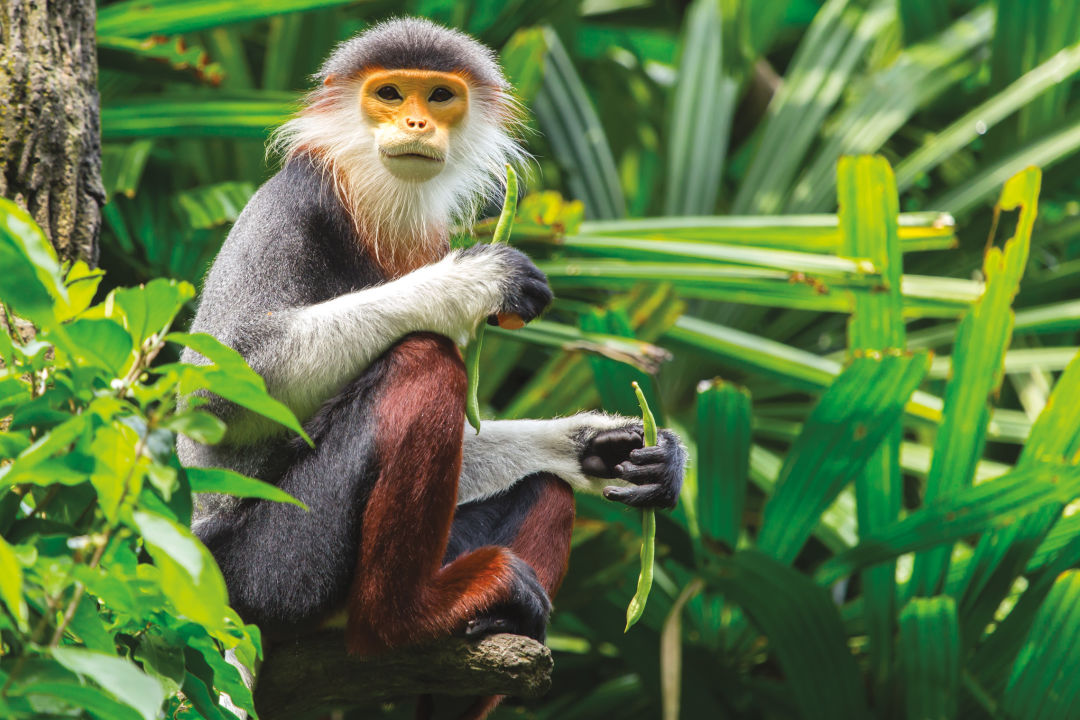
50–80: percentage decline of Indochina's douc langur populations over the last 30 years
“That was odd to me,” Montuori says. “People out looking for the ‘precious’—it was disturbing to hear it described like that.”
Montuori, still pretending to be the Forest Grove shop owner, expressed interest in a wild boar skull. He also asked about the operation’s unlisted “back room”—thus scoring an array that included orangutan skulls, hornbill heads, a langur skull, and a rib of an endangered marine mammal called a dugong. (Via PayPal: $4,800.) Throughout the summer, Montuori engaged in brisk correspondence with Ling and Yeo, haggling over purchases, egging the owners into revealing ever more about their business practices. Meanwhile, packages started arriving, shipped via companies like DHL and EMS, dispatched from various cities in Malaysia by senders using pseudonyms.
The contraband was in hand. Montuori also followed the money. Through broader record sweeps and outside interviews, he’d identified a minimum $90,000 in provable illegal wildlife transactions between the smugglers and US clients, including $14,000 from his informant—a thin slice of underground activity that could easily reach into the millions. Ling and Yeo were profiting handsomely from far-flung collectors hungry, like their runners, for the “precious.”
A tragic irony of wildlife smuggling: demand, and black market values, peak just as a species winks out of existence. Some might say that unlike, perhaps, oil, the earth’s fauna isn’t a finite resource. And under the right conditions, threatened populations can recover. But the approach of various ecological tipping points—for atmospheric carbon, glacial melt, deforestation, urban sprawl—means conditions are increasingly not right for recovery. Add in the Gollum-like hunters, loose in the world’s last wild forests, aware that the rarest of animals bring the highest rewards, and you’ve got the makings of multispecies apocalypse.
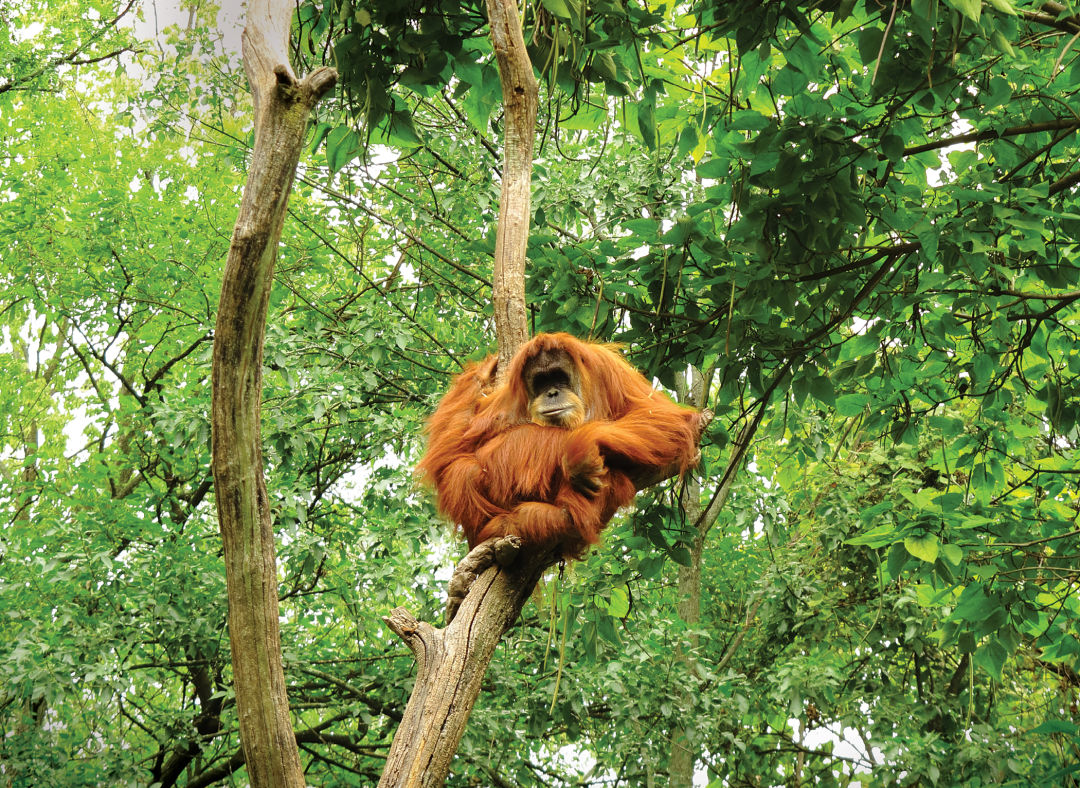
86 percent: the projected population decline of the Bornean orangutan, 1973–2025
Image: Courtesy Shutterstock/CVM
According to Iris Ho, a program manager for Humane Society International, we’re already there. She reports a 9,000 percent increase in rhino poaching in recent years in South Africa alone, from 13 animals in 2007 to more than 1,200 last year, along with the wholesale extirpation of certain African elephant populations now possible within a decade. And the helmeted hornbill? Around the time that one piece of flying ivory almost made it to Forest Grove in 2013, authorities in Indonesia and China seized 2,100 skulls.
Ho calls it a “global poaching and trafficking epidemic.” And while Americans might feel removed from the more visible dramas—the African ivory trade, illegal big-game hunting—she points out that the West Coast plays a key role in driving demand. In 2014, more than 40,000 individual items were seized entering US Pacific ports from Los Angeles to Seattle, including parts and products of leopards and tigers, sea turtles and elephants. These same ports also serve as departure points for such native items as threatened rattlesnakes, paddlefish roe, and abalone.
“The illegal wildlife trade doesn’t exist in a vacuum,” says Ho, “as Operation Pongo demonstrates.”
Enforcement here rests largely with agencies like Fish and Wildlife, the Coast Guard, and the National Oceanic and Atmospheric Administration, which build cases that must compete for court time with sexier issues like the international heroin trade and global terrorism.
“When you’re dealing with wildlife [smuggling], it’s harder to get the volume to get to the values that would rival a securities fraud case or massive credit card fraud,” says Assistant US Attorney Ryan Bounds, who is Portland-based but charged with cases around the world that have a connection to Oregon and can be prosecuted here. Bounds meets regularly with a “green team” of local special agents from NOAA, the Coast Guard, Bureau of Land Management, and Fish and Wildlife, discussing investigations from poaching to plant trafficking, seeking cases that meet the threshold for trial. With wildlife, it might take a while for the illegal sales to add up, but “obviously you’re not talking about dollars and cents,” he notes. “We’re talking about species fighting for their survival.”
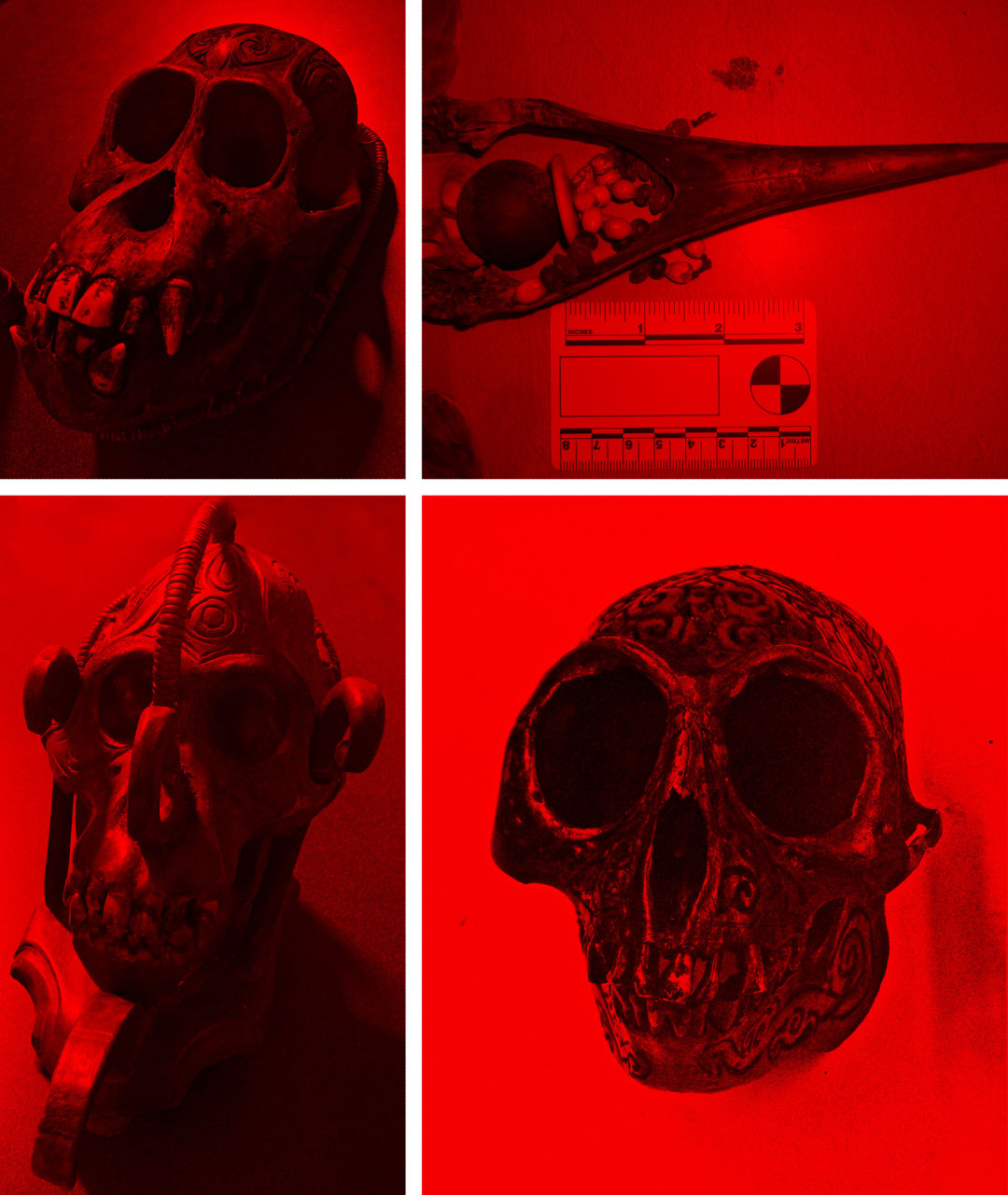
Carved orangutan skulls, hornbill beak, and langur skull confiscated during Operation Pongo
By summer’s end 2015, Montuori had his evidence. Now, he needed to take custody of Yeo and Ling. Here’s where he grows particularly tight-lipped: how, exactly, he lured the two smugglers to the United States.
“I don’t know if I want to go into detail as far as our tactics,” he says. “It’s generally known that we do covert work, so this isn’t a big surprise to wildlife smugglers out there. It’s just how we go about it that’s important to keep under wraps.”
Suffice to say, Yeo and Ling agreed to meet Montuori in Portland. By October, they’d forwarded him photos of their passports; they arrived in early December 2015. Within hours, Montuori led the two Malaysians into a cavernous, chilly warehouse space lined with file cabinets. The centerpiece? A rickety folding table covered with bones.
Yeo and Ling, dwarfed by the much taller Montuori, who was casually dressed in jeans and a blue puffy jacket, examined the items and detailed the grim provenance of each. Their knowledge confirmed that these indeed were the suppliers Montuori had been investigating for the past two years, here in the flesh. “It was surreal to be standing next to [them],” Montuori recalls. As they handled the skulls, bones, and intricately carved shells, hidden videotape caught their entire conversation.
Forty-five minutes into the meeting, agents from Fish and Wildlife and NOAA burst in for the arrest. Yeo and Ling “were completely shocked,” Montuori says. On Monday, December 7, they appeared in Portland federal court. Bounds outlined the maximum penalty for conspiracy to smuggle: 20 years in prison and a $250,000 fine. In April of this year, the pair pleaded guilty—and received much less stringent sentences. In June, the Forest Grove informant, whom USFW still will not officially name, pleaded guilty to misdemeanor charges: the Oregonian and other outlets identified him as Holstrom, a onetime Hillsboro marketing executive whose still-extant company bio describes him as a “collector of very unusual Asian Art, very unusual.”
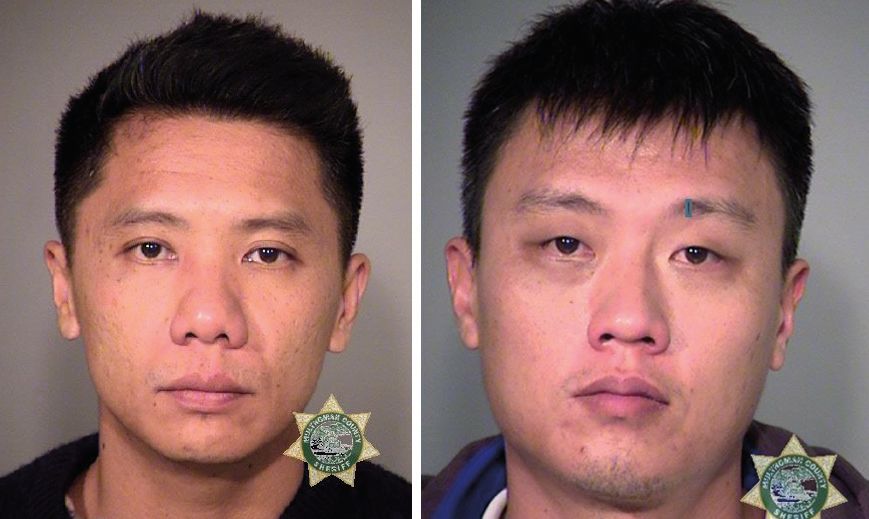
Convicted Malayasian animal-parts smugglers Eoin Ling Churn Yeng and Galvin Yeo Siang Ann
Operation Pongo, by Fish and Wildlife standards, was a huge success: two longtime traffickers were out of action. For a little while. Six months, to be exact.
“Part of the difficulty in prosecuting [these cases] is that so often the penalties are not as great as with your typical federal criminal prosecution,” admits Bounds. “Operation Pongo required an extraordinary amount of investigative work on the part of Special Agent Montuori. But in the end, sentencing guidelines don’t reflect the seriousness of the offense. These guys had been at it for a decade.”
In November, Ling and Yeo were released from federal prison in Northern California, set for immediate deportation back to Malaysia. Montuori hopes that from now on, they’ll stick to Borneo Artifact’s legitimate business: pottery, Chinese art, tribal curios. Holstrom’s website, Esoteric Stuff, is still selling tantric yak bones, jewelry, and masks.
Meanwhile, Montuori is on to other investigations. Bounds is building potential cases that involve carnivorous plants and an Oregon purveyor of endangered pelts. And wildlife champions like Ho continue to press their case: from supporting the closure of the ivory trade at environmental conferences in Johannesburg to backing legislation like Oregon Measure 100, on this November’s ballot—a “local solution” that proposed to strengthen state law regarding the sale of 12 threatened, nonnative species.
These advocates are up against the porousness of modern borders and the universality of modern demand. Pictures of black market wildlife swarm the Internet; inspections can’t check every package flowing through the global commercial system.
“People are surprised that someone in the Portland metro area would be interested in obtaining an orangutan skull,” says Montuori. “They think of Portland as an environmentally friendly city. But what we see in our job is that those people are everywhere. We see this world every day.”
Top Image: Courtesy Kate Capture/Shutterstock

